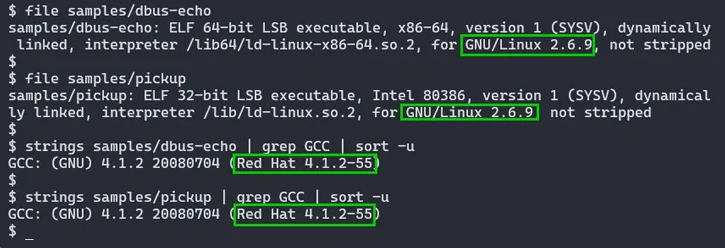Exploring GTPDOOR: A Linux Malware’s Intrusion into Telecom Networks via GPRS Roaming
Recent findings in threat intelligence have brought to light a sophisticated Linux malware named GTPDOOR, meticulously crafted to infiltrate telecom networks proximate to GPRS roaming exchanges (GRX). This discourse endeavors to unravel the intricate mechanics of GTPDOOR, emphasizing its distinctive utilization of the GPRS Tunnelling Protocol (GTP) for command-and-control (C2) communications. Furthermore, it sheds light on the potential associations of GTPDOOR with the notorious threat actor, LightBasin (aka UNC1945). Through a detailed examination of its functionalities and deployment strategies, this analysis seeks to offer comprehensive insights into the evolving threat landscape posed by this emergent malware.
GTPDOOR Overview:
GTPDOOR marks a notable progression in malicious software specifically engineered to exploit vulnerabilities within telecom infrastructure, particularly within GRX networks. It capitalizes on the inherent weaknesses of these networks to create covert pathways for communication and control. Distinguishing itself from traditional malware, GTPDOOR operates with a high degree of stealth, adopting the guise of ‘[syslog]’ upon activation. This clever disguise serves to circumvent detection mechanisms, allowing GTPDOOR to operate surreptitiously and minimize suspicion within the system. Its ability to blend seamlessly into the system’s processes enhances its efficacy in infiltrating and compromising targeted environments. GTPDOOR’s innovative approach represents a formidable challenge for conventional cybersecurity measures, requiring a nuanced understanding and robust defense strategies to counteract its insidious impact.
Technical Analysis:
Upon activation, GTPDOOR commences a sequence of actions geared towards its infiltration and remote communication initiation. Notably, the malware employs sophisticated process-name alteration methods, known as process-name stomping, to obfuscate its presence. By assuming the guise of a genuine syslog process invoked from the kernel, GTPDOOR evades detection mechanisms, heightening its stealth. Additionally, the malware strategically suppresses child signals and crafts a raw socket, enabling the establishment of a clandestine communication pathway. Through this channel, GTPDOOR gains the capability to intercept and manipulate incoming UDP messages traversing network interfaces. These intricate maneuvers solidify GTPDOOR’s foothold within the system, enabling further malicious activities while remaining undetected.

Command-and-Control Mechanism:
An intriguing facet of GTPDOOR lies in its inventive adoption of GTP for facilitating command-and-control (C2) communications. By leveraging GTP-C Echo Request messages containing malicious payloads, threat actors gain the ability to remotely execute commands on compromised hosts and seamlessly retrieve outcomes. This clandestine communication approach empowers threat actors to sustain control over infected systems, all while circumventing conventional detection methodologies. Through the utilization of GTP as a conduit for communication, GTPDOOR establishes a covert network that enables threat actors to operate with discretion and agility. This innovative approach underscores the evolving sophistication of malware tactics, necessitating heightened vigilance and adaptive defense strategies to combat emerging threats like GTPDOOR.
Covert Probing and Response:
GTPDOOR elevates its stealth capabilities through the facilitation of covert probing from external networks. Utilizing this feature, threat actors can deploy TCP packets to random port numbers, prompting responses from active implants. In response, the malware generates tailored empty TCP packets, furnishing valuable insights into the responsiveness of the compromised host. This covert probing mechanism serves as a discreet means for threat actors to gauge the operational status of compromised systems without arousing suspicion or triggering alarm bells. By leveraging this functionality, GTPDOOR enables threat actors to conduct reconnaissance activities with minimal risk of detection, reinforcing its position as a formidable threat within the cybersecurity landscape.
Deployment and Targeting:
GTPDOOR is meticulously crafted to target systems directly connected to the GRX network, a strategic design choice aimed at maximizing its impact within the telecom sector. These compromised hosts occupy a crucial position as intermediaries facilitating communication between telecommunication operator networks. Consequently, they represent prime targets for threat actors seeking to extract valuable subscriber information and call metadata. By infiltrating these pivotal nodes, GTPDOOR poses a significant risk to the integrity and confidentiality of telecom infrastructure. Its strategic focus on compromising systems interfacing with the GRX network underscores the calculated nature of its design, emphasizing the urgency for robust defensive measures within the telecommunications industry.
Remediation Steps:
- Implement Network Segmentation: Isolate critical telecom infrastructure from external networks to minimize exposure to potential threats like GTPDOOR.
- Patch Management: Regularly update system software and firmware to address known vulnerabilities exploited by malware.
- Intrusion Detection Systems (IDS): Deploy IDS solutions capable of detecting anomalous network behavior indicative of GTPDOOR activity.
- Endpoint Protection: Install robust antivirus and endpoint detection and response (EDR) solutions to detect and remove GTPDOOR infections.
- Access Control Policies: Enforce strict access control policies to restrict unauthorized access to network resources and mitigate lateral movement of malware.
- Security Awareness Training: Educate personnel about the risks associated with malware like GTPDOOR and promote vigilant cybersecurity practices.



